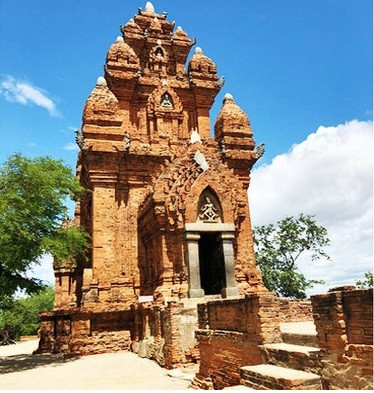
The tower complex is not only a spiritual and cultural space of people but also a valuable heritage, in which intact imprints of the history, architecture and sculpture art of the Cham ethnic minority people remain.
Touching the solid wall with the dark red brick colour of the Po Klong Garai tower, no one can believe these towers are 800 years old, challenging the sun and wind in a land suffering the harshest nature in the country.
Located on the top of Trau hill, Po Klong Garai tower stands out with its majesty. The road to Po Klong Garai tower is a sacred pilgrimage path and a spiritual space of the Cham people in Ninh Thuan in particular and the whole country in general. Over the past 800 years, various traditional festivals such as the ritual to open the tower door, praying for rain and the Kate festival have been held in the tower, gathering the Cham ethnic minority people together. The tower has become an attractive destination in Ninh Thuan for tourists to experience the local culture.
In addition, the Po Klong Garai temple tower cluster has also been recognised as a special national relic site and has become one of the most beautiful Cham tower complexes in the country. It consists of three towers named Cong (Gate), Lua (Fire) and Chinh (Main). Through the introduction of the narrator, also a Cham ethnic minority person living in Ninh Thuan, the image of a once brilliant civilisation is brought closer to visitors. Tourists can learn more about the construction techniques, unique bricks and stones, delicate and sharp carved patterns, precious documents with elaborately carved ancient writings, reliefs, sacred mascots such as Siva god, King Po Klong Garai statue and Nandin (Cow Goddess).
At the foot of the hill, the exhibition space reveals more images of the Cham culture through the images, artefacts and traditional trade villages of pottery and brocade weaving. After a journey to admire the priceless masterpieces that the Cham people have left for posterity, visitors can feel the respect and pride in the heritage of Ninh Thuan’s local people.
Source: Nhan Dan